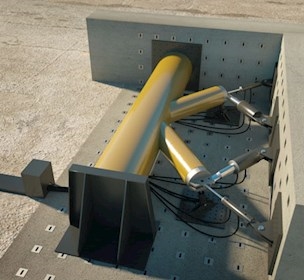5 tips for identifying weakness in products with HALT
HALT testing is an effective tool for identifying weaknesses in a product’s design. Here are five good tips for getting more out of the time and resources you invest in the HALT process.
Highly Accelerated Limit Testing (HALT) is a very effective tool for identifying design weaknesses – ideally, as early on as possible during the development process, where improvements in the newly developed product cost almost nothing – at least compared to what they cost later on in the process!
The philosophy behind HALT is popularly called “find five faults, fix them and get a better product.” HALT is carried out by testing the product in steps to extreme levels well beyond the specification limits. This method detects weaknesses within a few hours rather than the several weeks that traditional testing takes or years on the market. In reality, HALT is a process consisting of HALT itself and the relevant modifications. The individual company decides which modifications are relevant. The process continues until the product performs just as well or better than previously developed products or competing products. HALT is relevant for all products where it is important to avoid faults on the market.
Since the establishment of the first HALT laboratory in 2002, FORCE Technology has carried out more than 500 HALT tests on many different products, from small sensors to complex mechanical devices. Experience from these tests and knowledge from SPM ERFA Group 17: “HALT/HASS” shows that HALT reveals many faults, which are relevant and which are not found in other tests or analyses.
Five tips
Regardless of whether you are one of many companies, which routinely use HALT during the product development process, or a company that is examining the possibilities of HALT, we would like to share our experience on how you can get the most out of the HALT process. So here are our top 5 tips:
- Continue the HALT process with step-stress until the “limit of technology” is reached for each parameter, e.g. high and low temperature, vibration and a combination of temperature cycling and vibration. Avoid stopping too early or at a “pre-defined” level because you will fail to acquire important information.
- Ensure that as many as possible of the product’s functions are monitored during HALT, so that the maximum information about potential weaknesses is acquired, and the product can be further development in relation to these.
- Thoroughly prepare the physical set-up, so wasted time is avoided.
- Have sufficient numbers of extra products, modules and spare parts during the testing, so that you make the most of the booked testing time.
- Take action on all of the relevant weaknesses. In the case of weaknesses that are detected, which the company has decided not to implement changes against, put them on an observation list for the purpose of dealing with them, if an increasing trend in the number of failures is observed later on. Carrying out HALT is a waste of time and resources if the company does not intend to do anything about what is observed.
HALT AND HASS are methods for increasing the robustness of products, while accelerated product lifetime testing – traditional or Calibrated Accelerated Life Testing (CALT) – provide measures of a product’s reliability or lifetime.



